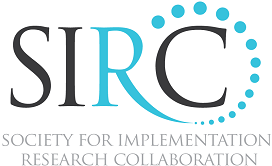Multiple Pathways to Sustainability: Using Qualitative Comparative Analysis to Uncover the Necessary and Sufficient Conditions for Successful Community-Based Implementation
Saturday 2:30 – 3:45 Breakout F3
Presentor: Brittany Rhoades Cooper
Brittany Rhoades Cooper, Washington State University; Angie Funaiole, Washington State University; Eleanor Dizon, Washington State University
For prevention efforts to achieve public health impact requires a clear understanding of the conditions necessary and sufficient for successful program sustainability beyond initial seed funding. Existing sustainability research typically conceptualizes sustainability as a static, binary endpoint with a focus on simple, linear associations between predictors and outcomes within the context of controlled, research settings. To address these gaps, our paper presents findings from a mixed-method study of 16 diverse Strengthening Families Program for Parents and Youth 10-14 (SFP) sites across WA State (implemented under non-research conditions). SFP targets family processes in order to promote school success and to reduce youth aggression and substance use. Levels of sustainability for SFP in WA range from a single program to implementation of 53 programs over 10 years. Qualitative Comparative Analysis (QCA), is used to explore the community, organizational, and program factors associated with sustainability. QCA is based on the premise that different paths/processes can lead to the same outcome and uses Boolean logic to identify sets of conditions that are necessary, sufficient, or both to produce a categorical outcome. This innovative and efficient approach offers implementation researchers and stakeholders a more comprehensive picture of which combinations of factors promote successful sustainability.
Evaluating a Medication Alert to Reduce Concurrent Opioid and Benzodiazepine Use at a Single VA Health Care System
Saturday 2:30 – 3:45 Breakout F3
Presentor: Eric Hawkins, Ph.D.
Eric Hawkins, Ph.D., Center of Excellence in Substance Abuse Treatment and Education, VA Puget Sound Health Care System; University of Washington; Carol Malte, MSW, Center of Excellence in Substance Abuse Treatment and Education, VA Puget Sound Health Care System; Andrew Saxon, MD, Center of Excellence in Substance Abuse Treatment and Education, VA Puget Sound Health Care System; University of Washington; George Sayre, PsyD, VA Puget Sound Health Care System; University of Washington; Hildi Hagedorn, Ph.D., Minneapolis VA Health Care System; VA Substance Use Disorder QUERI; Douglas Berger, MD, VA Puget Sound Health Care System; University of Washington ; Carol Achtmeyer, MN, ARNP, Center of Excellence in Substance Abuse Treatment and Education, VA Puget Sound Health Care System; Anthony Mariano, Ph.D., VA Puget Sound Health Care System; University of Washington, Anissa Frank, BA, Center of Excellence
Despite clinical practice guidelines that recommend assessment of risk factors before prescribing opioids and benzodiazepines, these medications are often prescribed concurrently to Veterans with risk factors that pose serious safety concerns (e.g. age >65, comorbid substance use disorders, sleep apnea, or suicide risk). Medication alerts have been identified as interventions with significant potential to reduce errors and improve patient safety. This prospective mixed-methods quality improvement project used the Promoting Action on Research Implementation in Health Services model as the guiding framework for evaluating the implementation of an advanced medication alert developed through a partnership with key service line leaders. The project aims to identify the potential influence of evidence, contextual and facilitation factors on the implementation of an advanced medication alert at a single VA health care system. We will present data from 1) surveys of key leaders and prescribers assessing perspectives and attitudes on concurrent opioid and benzodiazepine use, 2) semi-structured qualitative interviews addressing contextual barriers and facilitators to use of advanced medication alerts and to modifying prescribing practices, and 3) pharmacy records to evaluate preliminary effectiveness of the medication alert on reducing concurrent use of opioids and benzodiazepines among Veterans with high-risk conditions.
Usage of Promotional Media in Prolonged Exposure Therapy for PTSD: Current Practices and Practical Implications in VA Mental Healthcare
Saturday 2:30 – 3:45 Breakout F3
Presentor: Lindsay Trent
Lindsay Trent, National Center for PTSD, Palo Alto VA; Brandy Smith, National Center for PTSD, Palo Alto VA; Craig Rosen, National Center for PTSD, Palo Alto VA; Jill Crowley, National Center for PTSD, Palo Alto VA; Afsoon Eftekhari, National Center for PTSD, Palo Alto VA; Eric Kuhn, National Center for PTSD, Palo Alto VA ; Joseph Ruzek, National Center for PTSD, Palo Alto VA
Using provider feedback the VA developed promotional media tools to market Prolonged Exposure (PE) therapy to potential patients and referral sources. To this point, however, there has been little research conducted on the penetration and perceived usefulness of promotional media tools developed to enhance the dissemination of Prolonged Exposure (PE) therapy for PTSD. Participants in the current study were licensed Veterans Health Administration (VHA) providers who completed the National Prolonged Exposure (PE) Training Program. Variables assessed included perceived characteristics of PE across several domains and use of PE. Analyses using data from a follow-up survey administered at six and eighteen months post-training identified self-efficacy to promote PE as the most significant predictor of sustained usage of PE. Coupled with the literature base describing provider concerns about negative patient reactions to exposure-based therapy approaches, these findings point to the need for enhancing providers’ confidence in their ability to “sell??? the therapy approach to consumers and patient referral sources (i.e., other treatment providers). The current study examines the penetration, perceived usefulness, and implementation-relevant outcomes (e.g., barriers and facilitators) of a potentially useful tool for accomplishing this goal: promotional videos for PE that target treatment providers and patients through the presentation of psychoeducational information and testimonials. Quantitative and qualitative data were collected assessing variables related to perception of PE promotional videos and utilization. Descriptive data will be presented and relationship with clinician and system-level variables will be discussed. Practical implications will be offered including: increased treatment standardization/fidelity, sustainability, and decreasing training burden.
